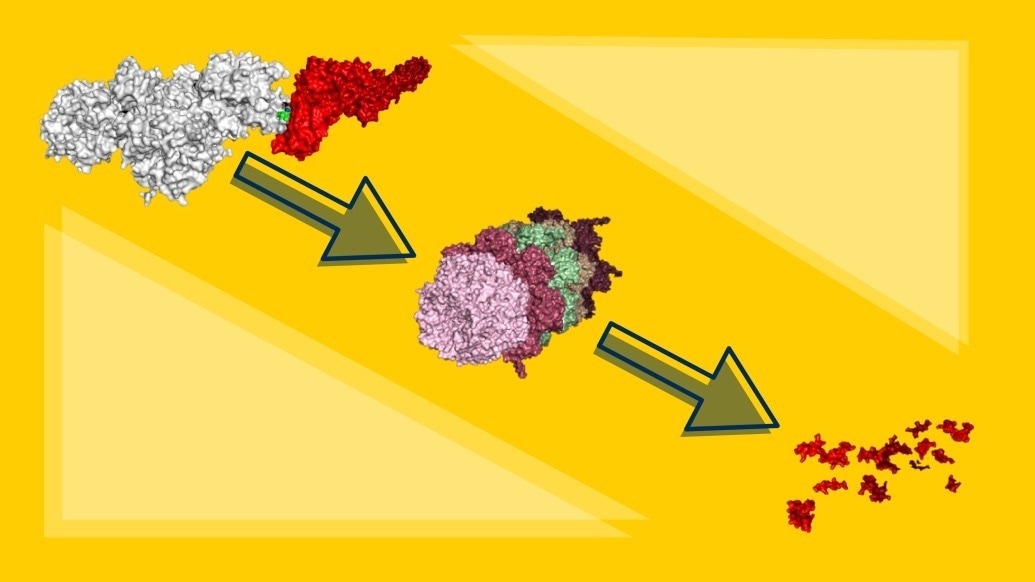STAT5 has generally been recognized as an enticing cancer target, but after years of research, it was downgraded to the “undruggable” category. Now, scientists at the University of Michigan Rogel Cancer Center have achieved success with a novel approach.
 Graphical representation of the protein degrader attacking STAT5 Credit: Wang Lab
Graphical representation of the protein degrader attacking STAT5 Credit: Wang Lab
Scientists discovered that by using a cellular garbage disposal function, they can remove STAT5 from cell cultures and mice, paving the way for possible expansion as a cancer treatment.
STAT5 is important in the development and progression of some blood cancers. However, efforts to find a small molecule inhibitor to block STAT5 have been impeded. Earlier research attempts have found it difficult to design a drug that has a high affinity for STAT5, a benchmark of how well they fit together.
Even if a compound binds with the protein, it may not enter the cell or tissue. It is also difficult to find a compound that only inhibits STAT5 while having no effect on the other STAT proteins.
Shaomeng Wang, PhD, Warner-Lambert/Parke-Davis Professor in Medicine and the University of Michigan professor of medicine, pharmacology, and medicinal chemistry, had another idea.
His laboratory has been concentrating on a novel drug development strategy that targets protein degradation. This is a naturally occurring function that takes place within cells to eliminate unwanted proteins. Consider it like garbage disposal: This mechanism eliminates unwanted or damaged proteins from cells when they are no longer required to keep the body healthy.
Using this method, Wang’s lab discovered AK-2292, a protein degrader that identifies and eliminates STAT5. The compound had a high affinity for STAT5 and had no impact on other STAT proteins.
It was effectively taken up by both cell lines and mouse models, and it was discovered to stop cell growth in human chronic myeloid leukemia (CML) cell lines and to induce tumor regression in CML mouse models. The findings were published in Nature Chemical Biology.
Unlike a small molecule inhibitor, which is intended to bind to the protein and interfere with its function, the protein degrader works by removing STAT5 proteins from tumor cells and tissues.
We’ve overcome some of the major issues that were barriers for scientists to target STAT5. People have worked in this field for the last 20 years, and there are no small molecules targeting STAT5 going into clinical development. This study shows us STAT5 can be targeted through a protein degradation approach.”
Shaomeng Wang, Warner-Lambert/Parke-Davis Professor, Medicine, University of Michigan
“It’s a new, exciting direction for developing a potential drug molecule targeting STAT5 for the treatment of cancers in which this protein plays a major role. This compound gives us a very solid foundation to do further optimization to identify a compound that we can eventually advance into clinical development,” Wang adds.
Wang’s lab has been researching protein degraders for several years and currently has several degraders in sophisticated preclinical development studies, which they believe will contribute to clinical trials for cancer treatment in humans.
Source:
Journal reference:
Kaneshige, A., et al. (2023) A selective small-molecule STAT5 PROTAC degrader capable of achieving tumor regression in vivo. Nature Chemical Biology. doi.org/10.1038/s41589-022-01248-4.